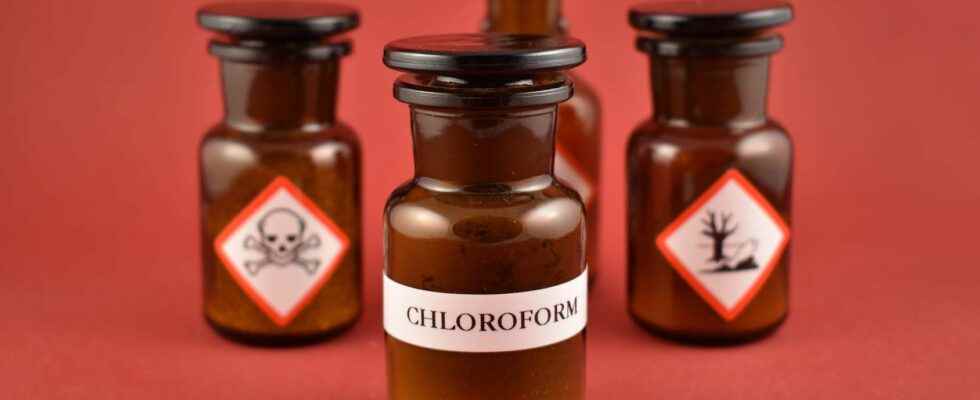Chloroform (or trichloromethane) is a hydrocarbon halogen having Brute formula CHCl3. It was discovered almost simultaneously by Samuel Guthrie (United States), Justus von Liebig (Germany) and Eugène Soubeiran (France) in 1831. It appears as a colorless and very volatile liquid with a characteristic ethereal odor.
Chloroform in the environment
Chloroform tends to escape into the atmosphere due to its large volatility and its low ability toadsorption. Its natural origins are essentially seawater (it is manufactured by some algae and bacteria) and rock transformation. The main anthropogenic source is due to water treatment plantsby the action of chlorine on the matter organic matter in surface waters. Small amounts of chloroform are present in tap water (when it comes from a network where chlorine is used for disinfection), food,air exterior and interior.
Chloroform is registered in the Reach chemical substances register, with a ban on the marketing of mixtures at concentrations equal to or greater than 0.1% by weight. Industrial facilities are also required to comply with air and water discharge thresholds.
The dangers of chloroform
It is irritating to the skin and eyes. L’inhalation vapors (3 minute exposure to concentrations of 920 ppm) causes vertigo and dizziness. In high doses, chloroform is toxic to the heart, central nervous system and the liver. Although it is not flammable, chloroform can decompose under the action of heat into hydrogen chloride and phosgene, gas corrosive and toxic. It reacts violently with aluminum, magnesium, metals alkalis, strong bases such as welded and potash as well as alkali alcoholates.
History and uses of chloroform
For more than a century (from 1847 with Pierre Flourens, to 1940), chloroform was used as anesthetic to relieve the pain and put the wounded to sleep. Queen Victoria used it during her childbirth and he served extensively in the American Civil War. After that, chloroform was mainly used for the synthesis of chlorodifluoromethane, or HCFC-22, as coolant. This substance was banned in Europe in 2004 in household appliances, then in 2015 for all uses.
Current uses of chloroform:
- manufacture of chlorofluorinated hydrocarbons (Teflon for example) ;
- extractingessential oils and D’alkaloids ;
- extraction of antibiotics, hormone, nicotine, quinine, vitamins… in the pharmaceutical industry;
- solvent and purifying agent in materials industry plastics.
You will also be interested
Interested in what you just read?
